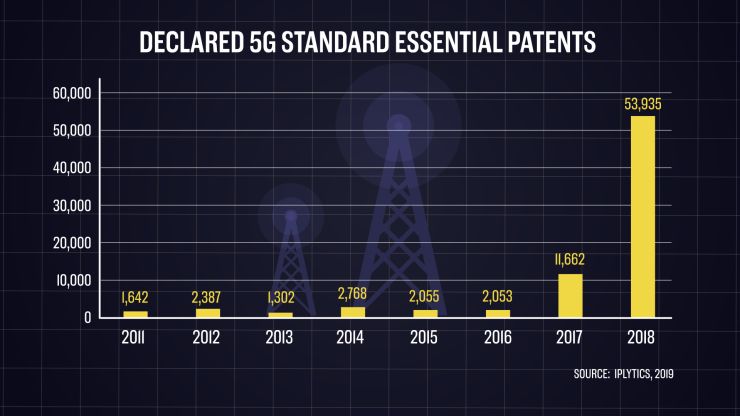8th Mar 2019
Imagine a business with no need for internet cabling. Or paramedics performing complex surgery on the road, directed live via video link.
These were just a couple of the 5G demonstrations being showcased at this year’s Mobile World Congress (MWC) in Barcelona.
Companies need to own 5G SEPs (Standard Essential Patents) if they want to implement 5G technology, and in 2018 the number of SEPs more than quadrupled from the year before. 5G SEP’s declared over time Giorgio Tonella, CNBC
And as more smartphone makers release 5G compatible phones, more resources are being poured to expand the necessary infrastructure and networks worldwide.
5G however is not just about faster connectivity to your smartphone.
“The industries are getting smarter than before. 5G can transmit more information and data from sensors to servers.” said SK Telecom IoT business manager, Kinam Kim.
At MWC, the South Korean mobile operator was showcasing a 5G connected factory analyzing components on a production line. The faster connectivity allowed robotic cameras and robotic arms to manage inventory at super fast speeds and thus eliminate bottlenecks.
Also on site was Intel’s 5G connected pop-up grocery store. All shoppers needed was a smartphone with your own QR code from the store.
“You may want to have a retail pop-up store almost anywhere.” said Sandra Rivera, senior vice president of Intel’s Network Platforms Group. “At a concert, at a sporting event, at a convention centre and be able to do that wirelessly without a lot of infrastructure build out or laying of cable or fibre, that’s what 5G will allow you to be able to do.”

SK Telecom’s demo of a 5G connected factory at Mobile World Congress, 2019, NurPhoto, Getty
5G is also being adopted by the medical industry with high internet speeds being seen as a potential aid to help improve the standard of care for patients.
Catalan research centre i2CAT in partnership with the Government of Catalonia has unveiled a plan to develop 5G networks in the region’s hospitals and ambulances. It could allow medical specialists to support ambulance staff via a live video link even while they’re out on the road.
“When there is an event or an accident that requires a specialist, the professional has a visual view of the patient in high definition” said I2CAT’s chief technology and innovation officer Sergi Figuerola. “He’s also monitoring in real time the data from the different electronic equipment on the patient so that they can take decisions in real time.”